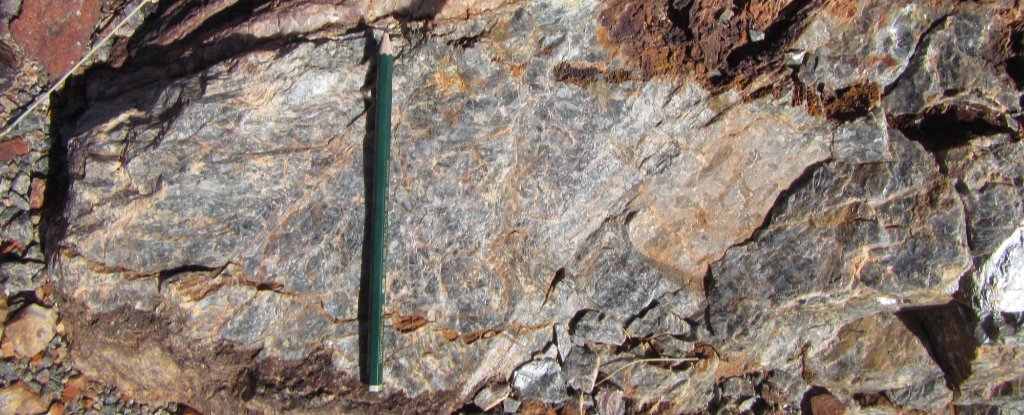
Researchers have discovered organic molecules trapped in incredibly ancient rock formations in Australia, and revealed that what they say is the first detailed evidence of early chemical ingredients that would have sustained Earth’s ancient microbial life forms.
The discovery, made in the 3.5 billion-year-old Dresser Formation of Pilbara Craton in Western Australia, adds to a significant body of research pointing to ancient life in this part of the world – one of only two pristine, exposed deposits of land on Earth dating back to the Archean Eon.
In recent years, the Dresser Formation’s hydrothermal rock has repeatedly shown signs of what appears to be the earliest known life on land, with scientists discovering “definitive evidence” of microbial biosignatures dating back to 3.5 billion years ago.
Now, in a new study, researchers in Germany have identified traces of specific chemistry that allowed such primal organisms to exist, by finding biologically relevant organic molecules contained in barite deposits, a mineral formed by various processes, including hydrothermal phenomena.
“In the field, the barites are directly associated with fossilized microbial mats, and they smell like rotten eggs when freshly scratched,” explains geobiologist Helge Mißbach from the University of Cologne in Germany.
“So we suspected that they contained organic matter that could have served as nutrients for early microbial life.”
 Barite stone from the Dresser Formation. (Helge Mißbach)
Barite stone from the Dresser Formation. (Helge Mißbach)
While scientists have long hypothesized how organic molecules might act as substrates for primal microbes and their metabolic processes, direct evidence has been largely elusive to date.
To investigate this, Mißbach and fellow researchers examined inclusions in barites from the Dresser Formation, where the chemically stable mineral is able to store liquids and gases in the rock for billions of years.
Using a range of techniques to analyze the barite samples – including gas chromatography mass spectrometry, microthermometry and stable isotope analysis, the researchers discovered what they describe as an “intriguing diversity of organic molecules with known or inferred metabolic relevance.”
Among these were the organic compounds acetic acid and methanethiol, in addition to numerous gases, including hydrogen sulfide, which could have been of biotic or abiotic origin.
 (Mißbach et al., Nature Communications, 2021)
(Mißbach et al., Nature Communications, 2021)
Above: the Barite rock, which indicates a close association with stromatolites.
While it may be impossible to be sure of the exact relationships, the proximity of these inclusions in the barite rock and adjacent organic fouling, called stromatolites, suggests that the ancient chemicals once carried in hydrothermal fluids may have affected ancient microbial communities. .
Indeed, many of the compounds discovered in the liquid inclusions containing barite … would have provided ideal substrates for the sulfur-based and methanogenic microbes previously proposed as players in the Dresser environment, the researchers write in their study.
In addition to chemicals that may have served as nutrients or substrates, other compounds found in the inclusions may have served as ‘building blocks’ for various carbon-based chemical reactions – processes that could have stimulated microbial metabolism by producing energy sources, such as lipids. , which can be broken down by life forms.
In other words, essential ingredients of methylthioacetate, a proposed critical agent in the origin of life, were available in the Dresser environments, the team explains.
“They could have provided the building blocks for chemoautotrophic carbon fixation and thus the anabolic incorporation of carbon into biomass.”
The findings are reported in Nature Communications